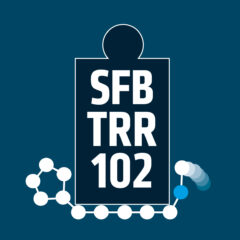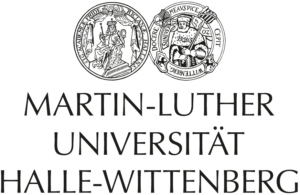Exchange of the Aβ turn structure for an inducible protein turn motive
Alexander Korn
Population Annealing Molecular Dynamics Simulations of Proteins in Explicit Solvent
Fabio Müller
Location: zoom
Time: 15.20 – 17.00
Chair: Anika
Exchange of the Aβ turn structure for an inducible protein turn motive
by Alexander Korn
The formation of the native structure is mandatory for protein functionality. If this process is compromised, misfolded proteins can be formed which can cause severe diseases. In many of these diseases, proteins adopt a special misfolded conformation called amyloid fibrils. The largest group of amyloids associated diseases are neurodegenerative diseases with Alzheimer’s disease as the predominant representative.
The amyloid β peptide (Aβ) is the hallmark protein of Alzheimer’s disease. Aβ exists in different varieties with the 40 amino acid long variant being the most abundant alloform. Its most important characteristics is its ability to aggregate into protein fibrils. For this, the formation of a turn structure within the peptide is essential. To study the role of the turn formation in the fibrillation process we exchanged the natural amino acids participating in the turn with protein motives that form inducible turns: namely the EF-hand motive and the RTX-motive. Both motives form turns upon binding of calcium ions or other more positively charged metal ions.
The fibrillation of WT Aβ is sensitive for calcium and other metal ions at millimolar concentrations. At nanomolar concentrations that induce the turn formation in EF-hand and RTX motives no influence on WT Aβ was detected. For both turn-exchanged Aβ variants the fibril formation capacity was impaired and only sporadic fibril formation was observed. However, this was not reproducible and a systematic change of calcium or lanthanum ion concentration did not correlate with changes in the fibrillation behavior.
Because the exchange of the full turn motive proved to be too severe, in following experiments the turn formation should be induced by usage of an azobenzene photoswitch that can be inserted within the WT Aβ.
Population Annealing Molecular Dynamics Simulations of Proteins in Explicit Solvent
by Fabio Müller
The simulation of proteins is inherently difficult due to slow equilibration in the low temperature region. To tackle this problem for molecular dynamics (MD) simulation, there have been several developments in the framework of generalized ensemble MD in the last 30 years. In our group, recently, a novel generalized ensemble was adapted for MD, namely population annealing. The resulting population annealing molecular dynamics consists of simulating a whole population of copies (replicas) of the system starting from high temperature. Intermediate MD equilibration intervals are alternated with a step-wise lowering of the temperature. At each lowering of the temperature the population is resampled according to the Boltzmann weights of the individual replicas, keeping the whole ensemble in thermal equilibrium. This approach allows for the use of massively parallel computing resources and was successfully tested in the case of met-enkephalin in vacuum. In this work, we extend the method to the simulation of proteins with explicit solvent. To further accelerate the MD part of the simulation we have made use of several GPUs. We present preliminary results for the simulation of the C-terminal β-hairpin of protein G in explicit solvent, which show a good sampling of the low-temperature phase. The regions of the phase space discovered by works employing other sophisticated simulation techniques are well covered.




